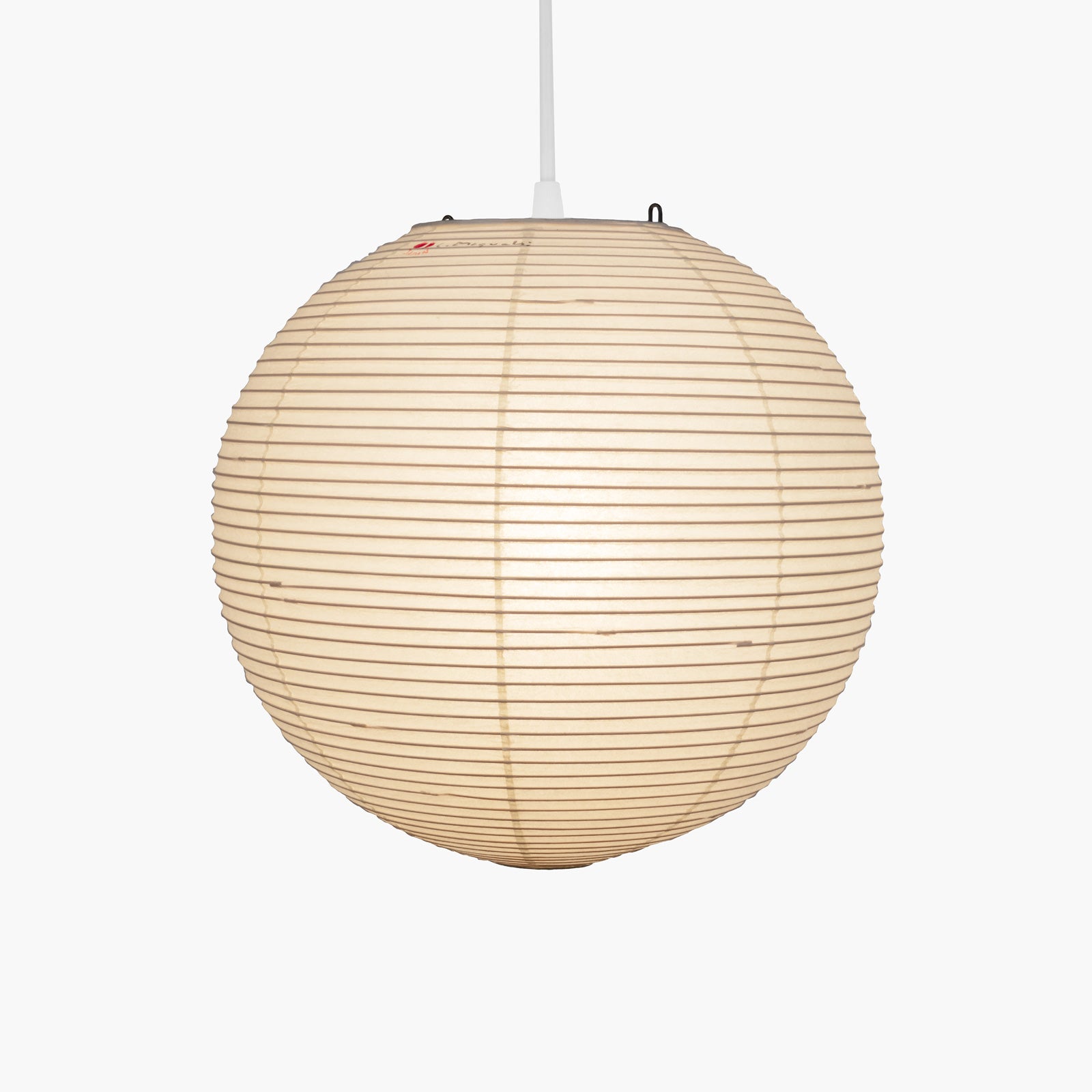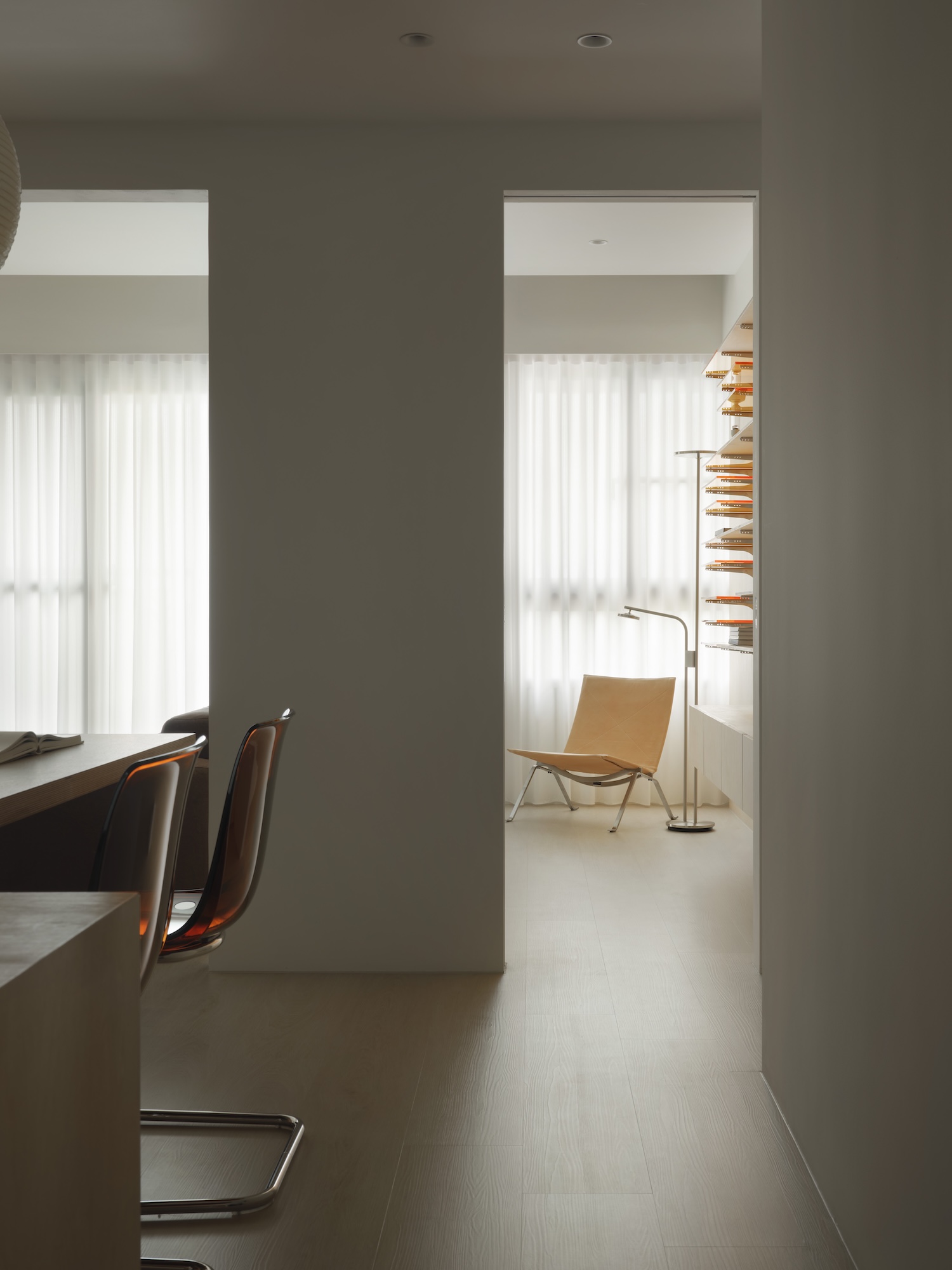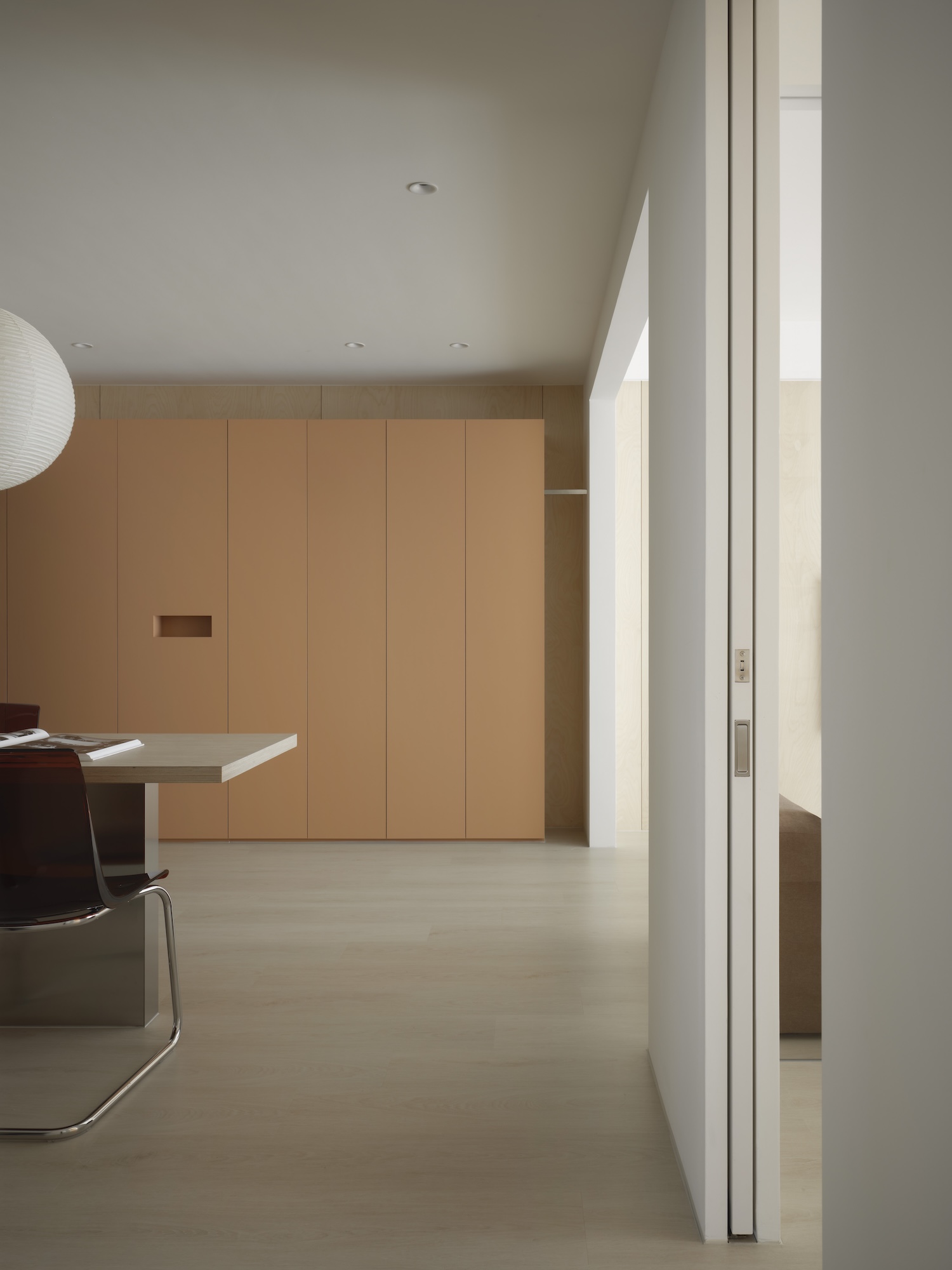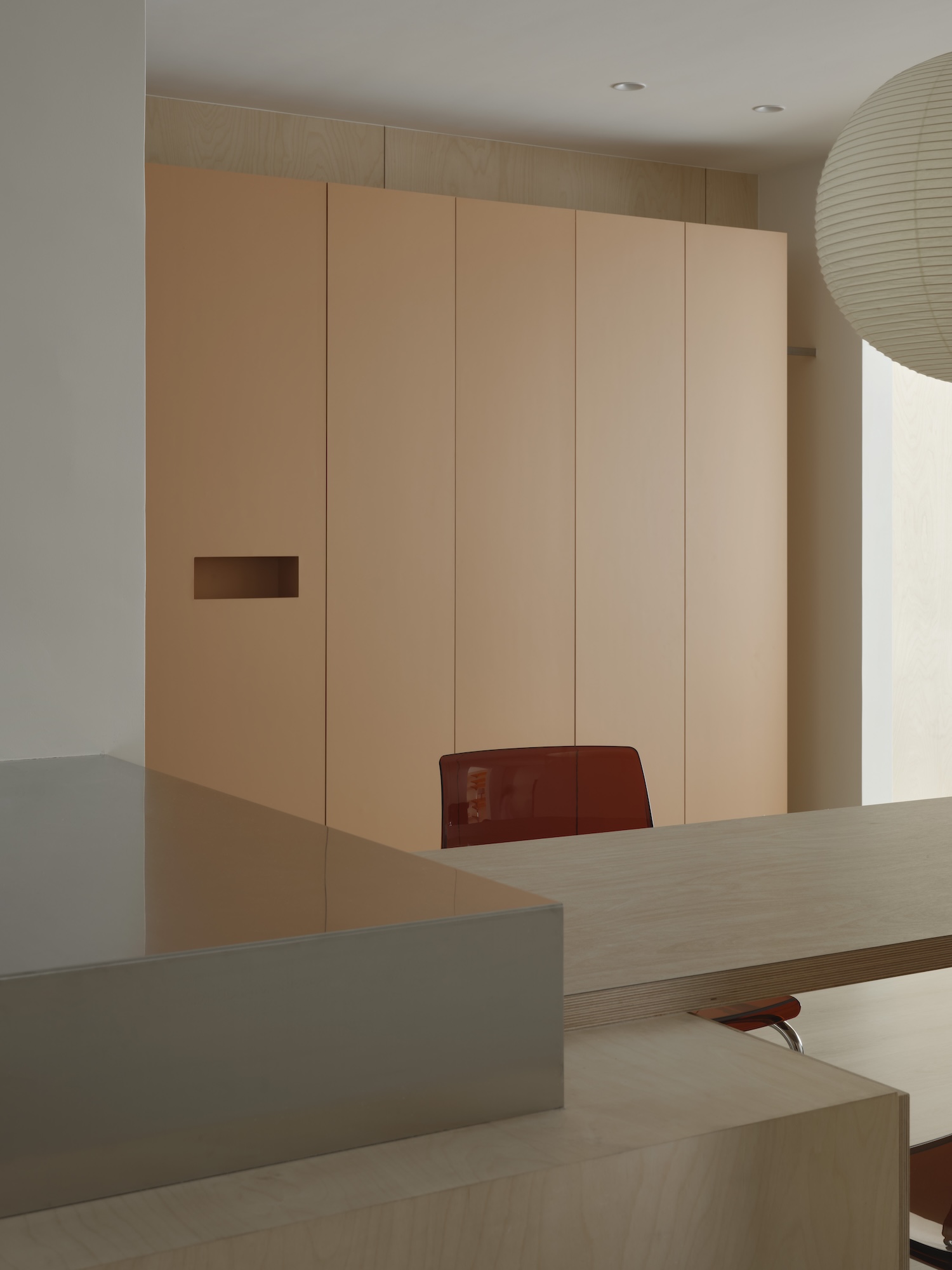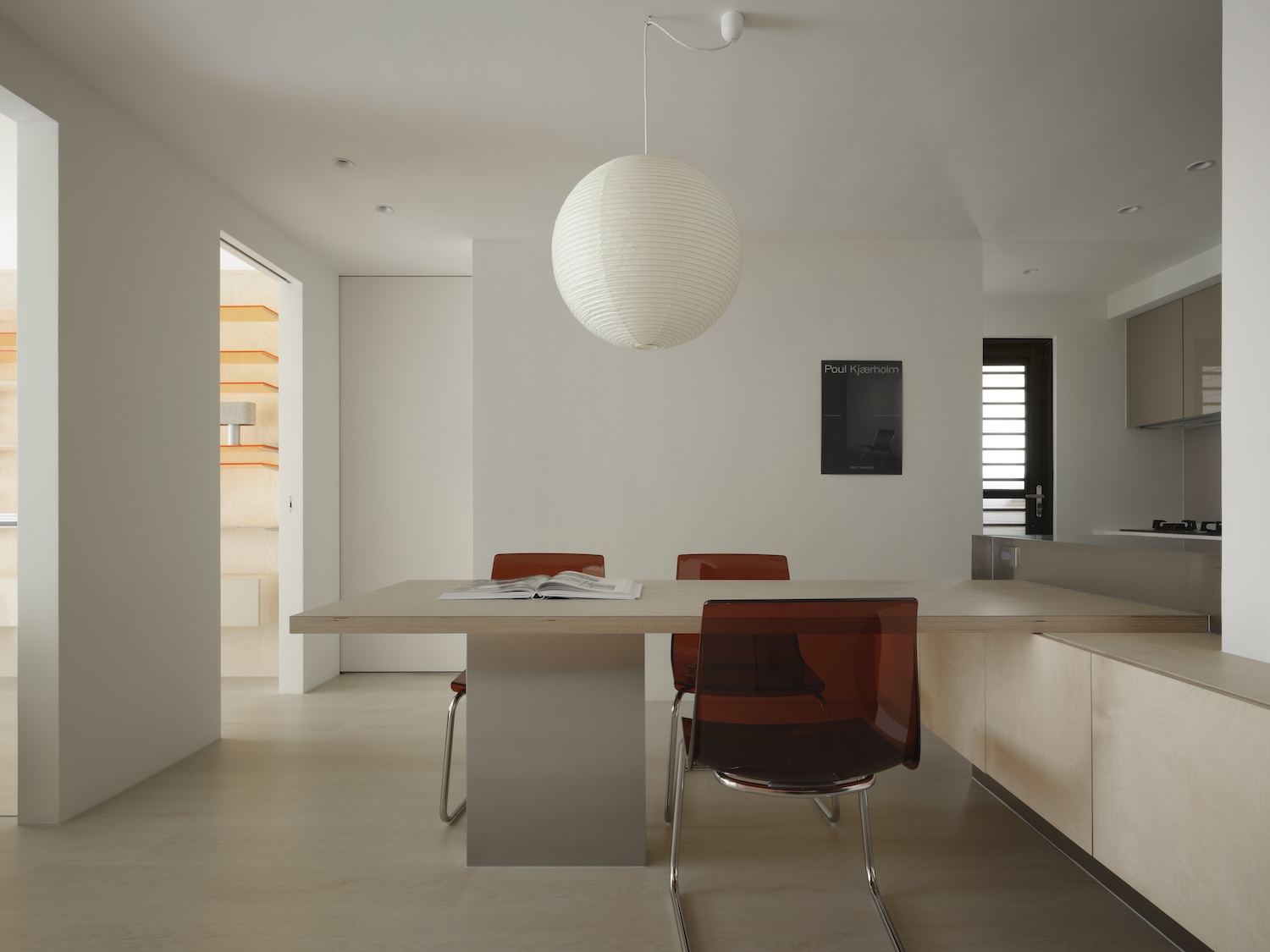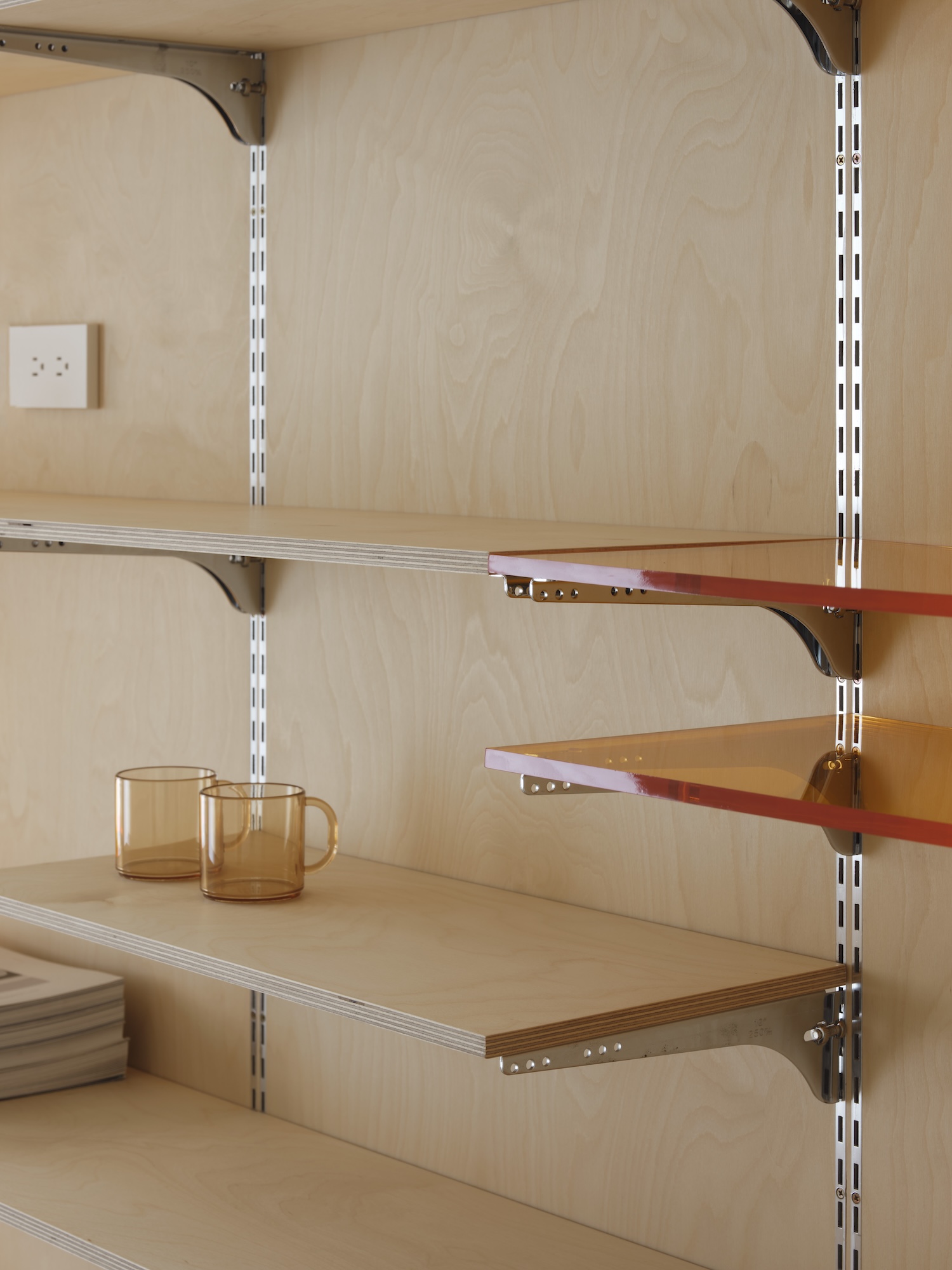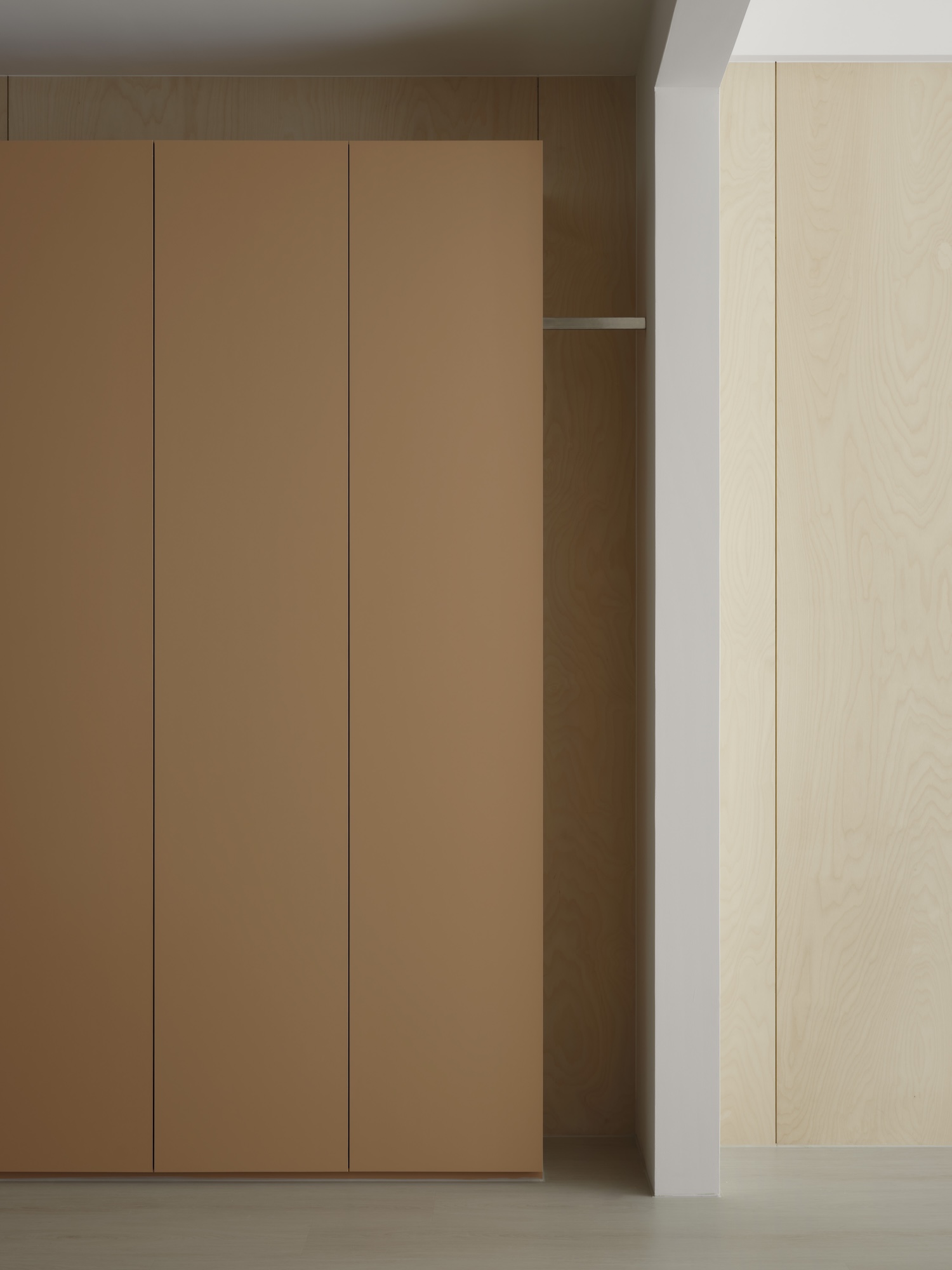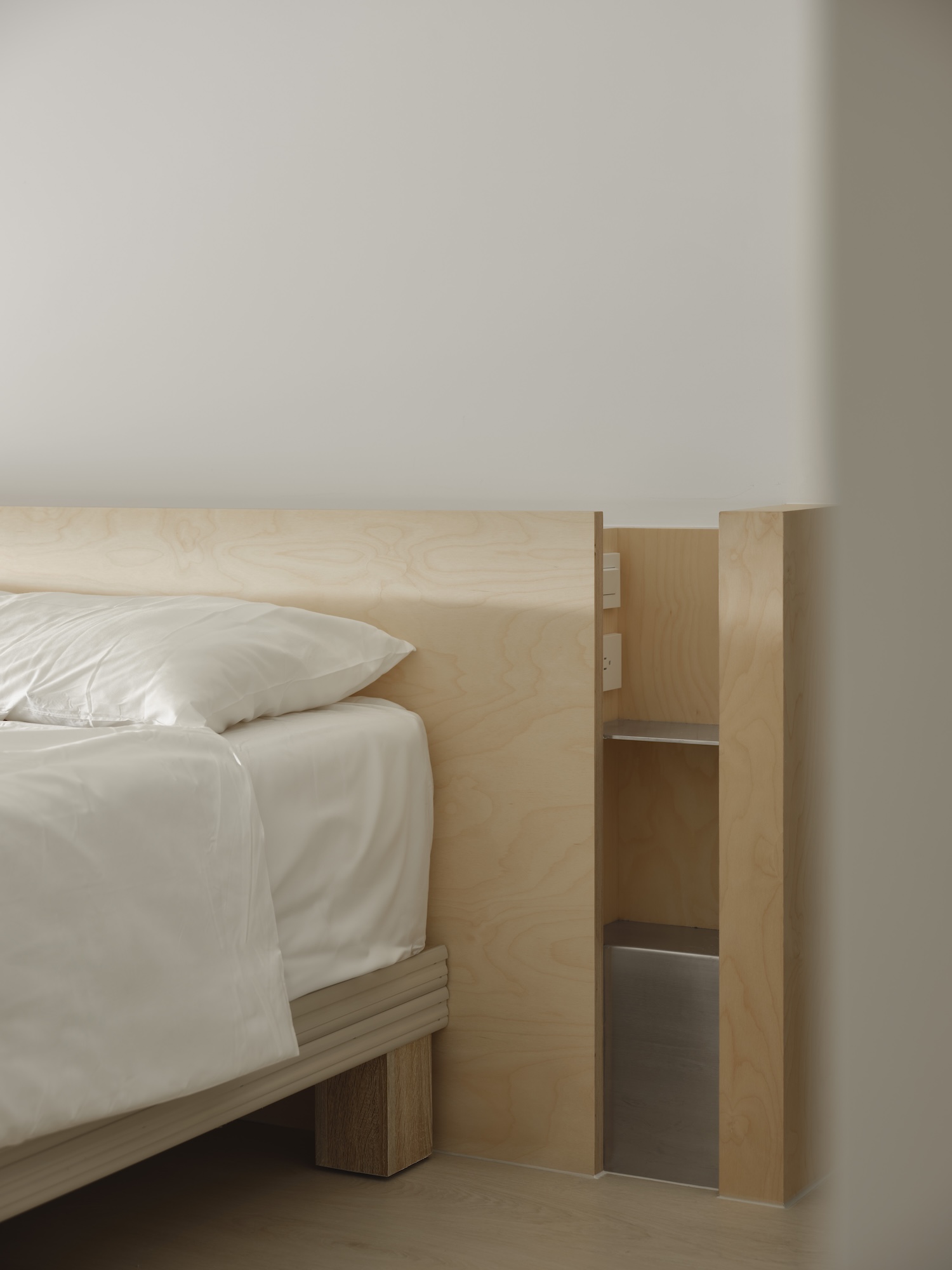Apartment L is a minimalist apartment located in Kaohsiung, Taiwan, designed by True Thing Design Studio. A sliding door opens with the gentlest push—not so much a barrier as an invitation. In this thoughtfully crafted interior, the distinction between dividing and connecting becomes delightfully ambiguous. What first appears as a simple architectural solution reveals itself as a meditation on how we inhabit and move through space.
The project’s white walls operate as a foundational grammar, establishing a clear spatial syntax while allowing for unexpected moments of dialogue between rooms. These aren’t merely partitions; they’re carefully orchestrated pauses in the spatial narrative. “By carefully controlling the scale of openings,” the designer notes, “we calibrate the interaction between distinct spatial zones.” This calibration is evident in how sightlines extend beyond immediate boundaries, creating layered perspectives that expand the perceived dimensions of each area.
Historically, this approach recalls the Japanese concept of ma—the meaningful space between objects—though here it’s interpreted through a distinctly contemporary lens. Where traditional Japanese architecture might employ translucent paper screens, this design uses frameless sliding doors that nearly disappear when open, creating a more radical transformation between states of enclosure and openness.
The material palette reinforces this interplay between definition and dissolution. Birch plywood provides a warm, tactile backdrop—a material choice that connects to Scandinavian modernist traditions while feeling thoroughly of the moment. Against this neutral canvas, the “vibrant orange storage units, metal accents, and acrylic shelving” introduce moments of chromatic and textural surprise. These elements function as punctuation in the spatial syntax—bold exclamations that orient and energize.
What distinguishes this project is how it embraces human presence as an integral design element. As the designer poetically observes, “users become brushstrokes on a canvas, subtly inscribing their own narratives into the space.” This philosophy positions the interior not as a static showcase but as a framework for living—a stage set awaiting its performers.

